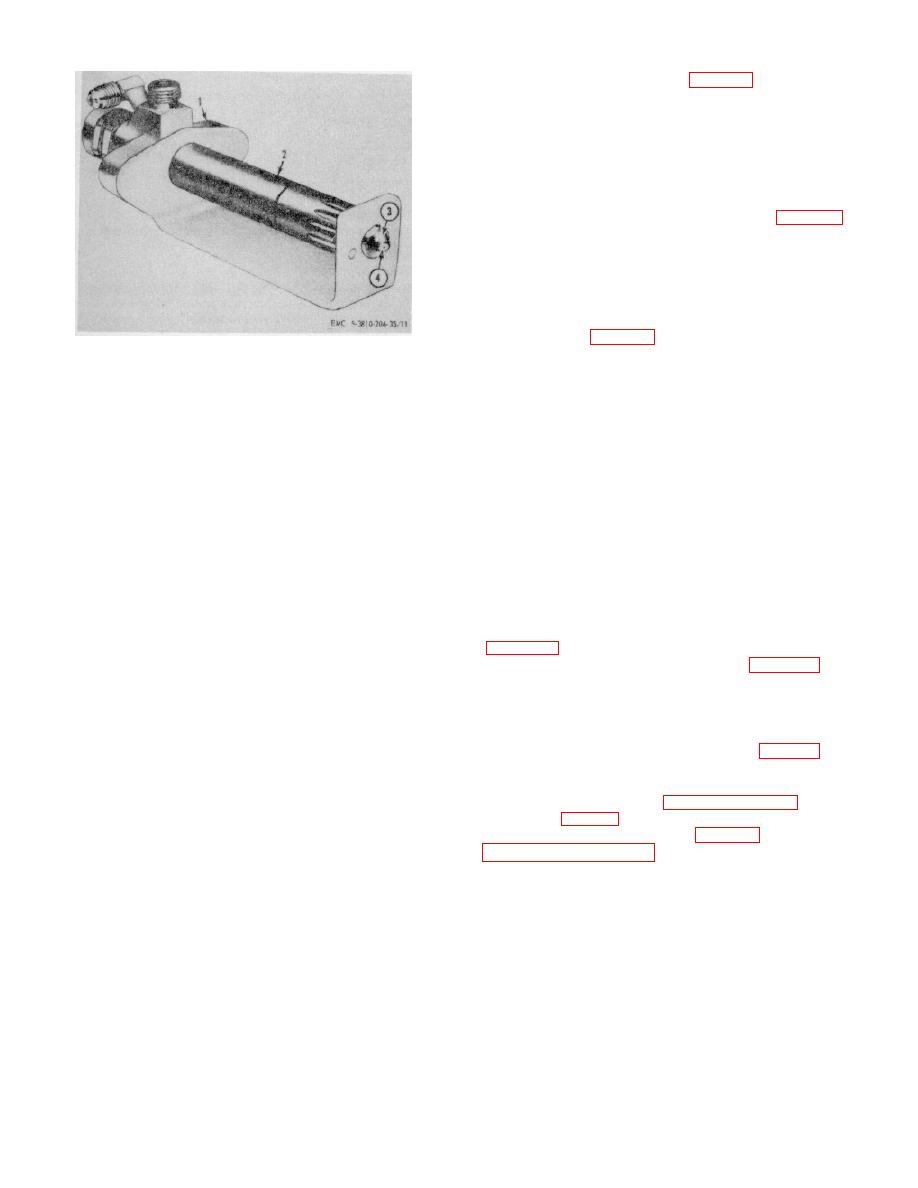
(2) Insert spindle (6, fig. 3-12) in body (9).
(3) Install spring (5) and adjusting screw (4) in
body (9).
(4) Install flatwasher (2) and nut (8) in body
(9).
(5) Install nozzle (11) and gasket (10) in body
(9) and secure with nut (12).
(6) Install flatwasher (2) and cap (1).
(7) Adjust injector nozzle tip (3, fig. 3-13) at
proper angle by positioning injector (2) in jig (1), then
turning tip until orifice (4) is in alinement with mark 0 on
jig.
(8) Test fuel injector by installing it on test
stand and check for an opening pressure of 2,200 psi.
(9) When opening pressure is incorrect,
remove cap (1, fig. 3-12), flatwasher (2), and loosen nut
1
Jig, tip angle setting
3
Nozzle tip
(3), then turn adjusting screw (4) clockwise to increase,
2
Fuel injector
4
Orifice
or counterclockwise to decrease pressure.
(10) When pressure tests correctly, tighten nut
Figure 3-13. Setting fuel injector nozzle tip angle with jig.
(3), install flatwasher (2) and cap (1).
(11) Remove injector from test stand.
laid aside for reassembly. Cover all parts with a light
(12) If fuel injector is to await future installation,
coat of fuel oil, then cover with a clean cloth until
protect against contamination.
reassembly begins.
(13) Install the fuel injector (TM 5-3810-201-
c. Reassembly, Testing, Adjusting, and Installation.
12).
(1) Assure that all parts are coated with clean
fuel oil.
Section VI. BLOWER (SUPERCHARGER) OR TURBOCHARGER
drain lines from front and rear blowers (TM 5-3810-201-
3-13. General
12).
(2) Remove water pump from front blower
The blowers (superchargers) are used on engines model
687C-18-ES, and the turbocharger is used on engines
(3) Loosen hose clamps (4, fig. 3-14) from
model D333TA. Both serve the same purpose, that of
boot (5).
delivering filtered air under pressure to cylinders for
(4) Remove blower adapters (TM 5-3810201-
combustion. They will be described in the maintenance
12).
paragraphs that follow.
(5) Remove eight capscrews and lockwashers
that secure front blower to engine (10, fig.3-14). Slide
3-14. Blower (supercharger) for Engine Model 687C-
front blower (1) to left approximately two inches,
18 -ES
uncouple it from rear blower (6), then remove front
blower (1) and gasket (44, sheet 1 of fig. 3-15) from the
a. General. Two blowers are mounted on left side
engine (10, fig.3-14).
of engine. Each furnishes air to three cylinders through
(6) Remove boot (5, fig. 3-14) from shaft (46,
adapters. The rear blower is coupled to and driven by
the accessory drive. Rear blower is coupled to and
(7) Loosen hose clamp from boot over
drives front blower, which in turn drives the water pump.
coupling at accessory drive.
Both are disassembled and reassembled in a similar
(8) Remove eight capscrews and lockwashers
manner. This paragraph will describe handling of front
that secures rear blower to engine, slide rear blower left
blower, showing differences between blowers in
to disengage coupling from drive.
applicable step (s).
b. Removal and Installation.
(1) Disconnect and remove external oil and
AGO 20051A
3-16

